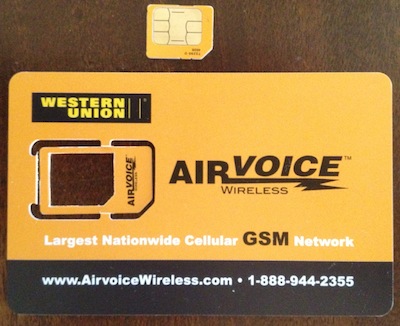Negotiate a Lower Cable/Internet Bill
Ahh the cable bill. If ever there was a archetypical love/hate relationship between the American household and a service provider then this has to be it. On the one hand, people love tv, and internet connectivity has become almost an essential utility (especially for the younger generations). However, people hate the prices that they pay for these services. If you want to see what I’m talking about, check out the Consumerists annual “Worst Company in America“. Comcast, Time Warner, Direct TV, Dish, Cablevision, AT&T, and Verizon make regular appearances and often fare quite well (err, bad) in the bracketed tournament of hated companies.
I would consider us lucky because where we live we actually have a choice between two internet providers, Comcast and Frontier. Back when we rented an apartment, we used Frontier and paid about $42/mo (after all the taxes and fees) for a 7 Mbps internet connection. Mbps stands for mega bits per second and shouldn’t be confused with MBps (mega Bytes per second). Generally, whenever you see internet speeds folks are talking about bits. There are 8 bits in a byte so a 8 Mbps is the same as 1 MBps. Confused? Good, let’s move on.
When we moved into our house 6 months ago we decided to try out Comcast’s internet only service. Comcast frequently runs promotions for new customers where you pay a set rate for the first 6 months of service and then they jack up that rate for the next 6 months and then you end up paying the ‘retail’ rate from then on. You are free to cancel at any time so I figured I’d give it a go. Our promo deal was for a 25 Mbps connection for $30, then it would bump up to $50, and finally to $65.
November was our first month at the $50 level and I already knew what I was going to do back when I signed up. I called Comcast to negotiate a lower rate. 20SomethingFinance.com has a nice how to that I roughly followed. There were a few differences and some omissions that I think merit some discussion.
- Before calling, do your homework and see what other companies are offering, this is extremely important!
- After dialing the number, the menu options are a bit different than what he has listed so don’t blindly hit #4 followed by #2 or you may end up ordering “Chairs, Rails, & Extreme Wrestling Pay per View”.
- After getting a retention/cancellation rep they will ask for your account details, address etc. It will seem like they are going to happily cancel your services without even giving you a chance to negotiate. Don’t worry, we’ll get to that in a second, just stay calm and confident.
- Finally, after verifying your account the rep will drop a short little line like “why are you leaving?” That’s your cue!
- Explain the fantastic deal the competition is offering and make sure to stress that your current bill is too high. If there is no competition in your area, they probably know and you’ll need to get creative.
- Be patient and friendly, especially if they put you on hold.
- If you get a counter offer, make sure you understand it. If you don’t like it, either try calling again or cancel your service. This is where doing your homework before hand pays off.
I looked up Frontier’s rates and they had indeed changed from our renter days.
$30 – 6 Mbps
$40 – 12 Mbps
$50 – 24 Mbps
The Comcast rep offered me a 50 Mbps connection good for the next 6 months for $35/mo, a credit for this month, and access to streampix, Comcast’s (weak) version of Netflix. Yes sirree. Sign me up. Amount saved over the next 6 months by making one simple phone call, $90. Time spent on phone, 9 minutes. Internet speed twice as fast, cherry on top.








